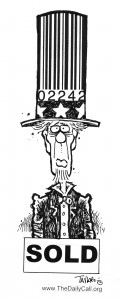A new exhibition dedicated to the history of the Nazi SS has opened at the German castle that epitomizes the myth of the “Black Order” to neo-Nazis. Although facing concern and even condemnation, curators point out that this is the best way to defeat the SS mythos and confront visitors with the brutal reality of Hitler’s henchmen.
Wewelsburg Castle in Germany gained notoriety as the focal point for the cult that the dreaded SS tried to forge for itself, and it’s easy to see why; the hill-top castle is full of occult artifacts and symbolism, such as an eerie Crypt with an eternal flame where the rings of deceased members were rumored to be buried, and a twelve-pillared chamber teeming with Arthurian symbols intended for the meetings of the masters of the new Nazi order. A key feature of this chamber is a tile design embedded in its floor called “The Black Sun”, which in neo-Nazi lore has become infused with magical powers. Over the years, mainstream television documentaries and books in Europe and America as well as neo-Nazis have all glorified the castle’s mystique.
Understandably, opening up the castle and displaying SS artifacts such as uniforms and banners could, as numerous commentators wrote, make Wewelsburg a destination for neo-Nazi pilgrims. But Moritz Pfeiffer, a historian attached to the museum, notes that “This has always been a place of worship for them. However, “leaving it closed only shrouds it in mystery.”
It’s precisely that mystery that feeds the mythological status accorded to the SS-artifacts, says Pfeiffer: “’The Black Sun’ is a name coined for the (floor) design in the 1990s. When people come here, they can see it’s actually green and doesn’t have any powers – it’s just a design on the floor.”
Dr. Jan Erik Schulte, an SS-expert of the Hanna Arendt-institute who helped create the exhibition, adds that “the entire idea of the museum is to demystify the SS and place it in historical and ideological context.” Importantly, the exhibit puts every part of the SS-history and its artifacts in context with the victims of their crimes.
“The SS was a murderous organization,” says Schulte, “and so we’ve designed the museum so that no matter where you look, there’s no escaping the horrible crimes the SS committed. You can’t go in to see the artifacts without first going through rooms of pictures, objects and stories of the SS’ victims.”
It is not surprising that myths have formed surrounding the castle. “That was the point,” says Schulte “Himmler wanted Wewelsburg to be a political myth, to forge a history and a tradition in which the SS-ideology was a natural continuation.”
So desperate was Himmler to create a historical tradition, that he explored numerous alternatives. Schulte says that “before settling on the SS as an Order, Himmler considered them as Knights or even Samurai. Not even Himmler really knew what the SS was, what he wanted it to be.”
When Himmler leased the triangular castle in 1934, he originally intended to turn it into a school to conduct research supporting the SS racial ideologies. He changed his mind several times about the purpose of the castle. “There’s nothing homogenous about it,” says Schulte.
During the castle’s re-construction by prisoners from a concentration-camp established for this very purpose, the plastered walls of the 17th century castle were altered to look medieval and Himmler ordered the prisoners to build occult artifacts specifically for the purpose of shrouding the castle in legend.
“The myths behind Wewelsburg and the SS are fake,” says Pfeiffer, “and that’s precisely what the exhibition shows.” He says the museum is intended for school-groups and other people who want to study what happened here. “It’s important to know the truth about the SS, its crimes and its victims, not the myths.”
Not everyone is convinced. “A SICK museum celebrating Nazi Germany’s evil SS has opened at its former leader’s eerie HQ”, says the opening paragraph on The Sun’s April 19th article on the opening of the Wewelsburg Castle exhibition, warning that some believe it will “lead to far right neo-fascist pilgrimages to the fort” and that the “tourist attraction” has now been dubbed “Naziland”.
Staff agree that there will always be neo-Nazis who just come to be close to the artifacts. “Some people don’t come to learn,” says Schulte, “you can’t always tell who they are. But they’d need to physically wear blinders to not be horrified by the stories of the victims the exhibition shows along the way.”
The museum is well equipped to deal with those who come to venerate. “We have video-cameras everywhere and the staff is on alert,” says Pfeiffer, “anyone who clearly comes here to glorify is kicked out immediately.”
When told this article would be placed in the “Fighting Hate”-section of the fighthatred.com website, Schulte said “Thank you. That’s all we’re trying to do: Fighting Hate.”
http://fighthatred.com/fighting-hate/reports/692-ss-museum-busts-myths




